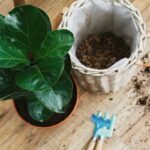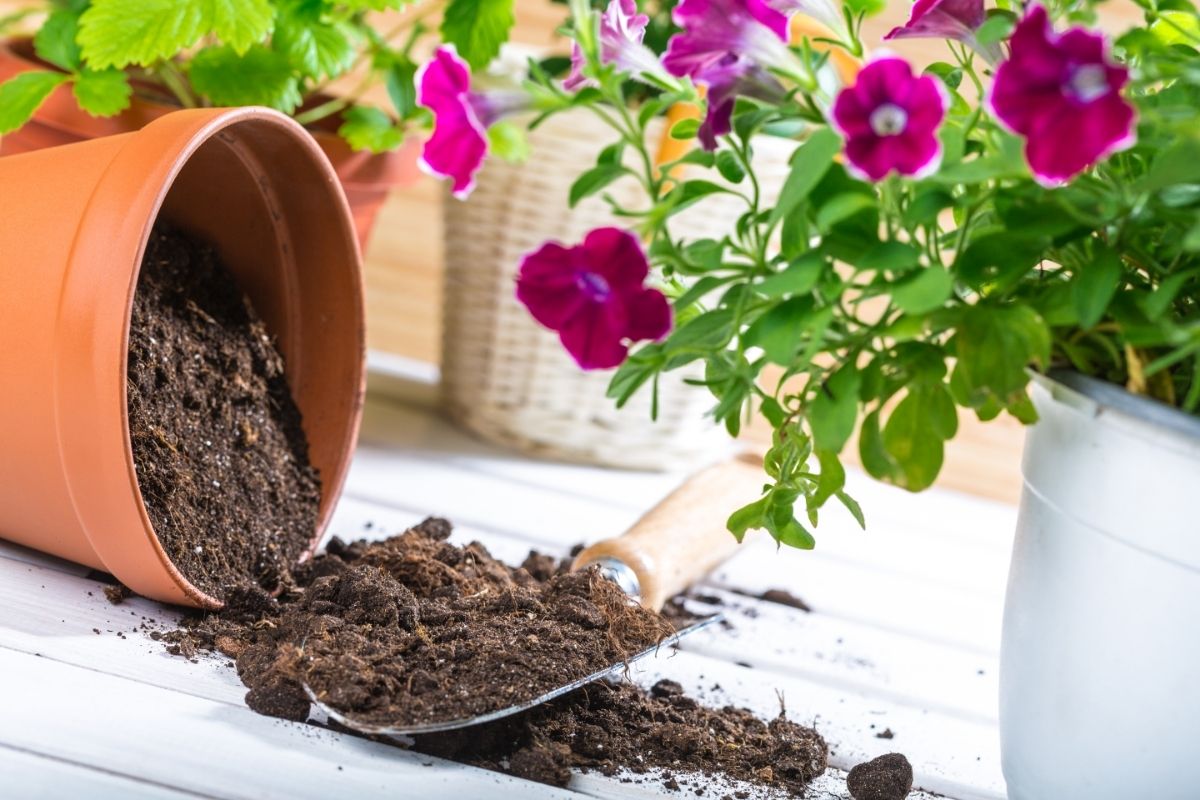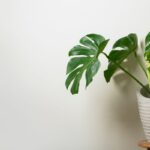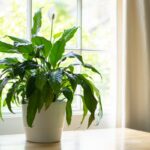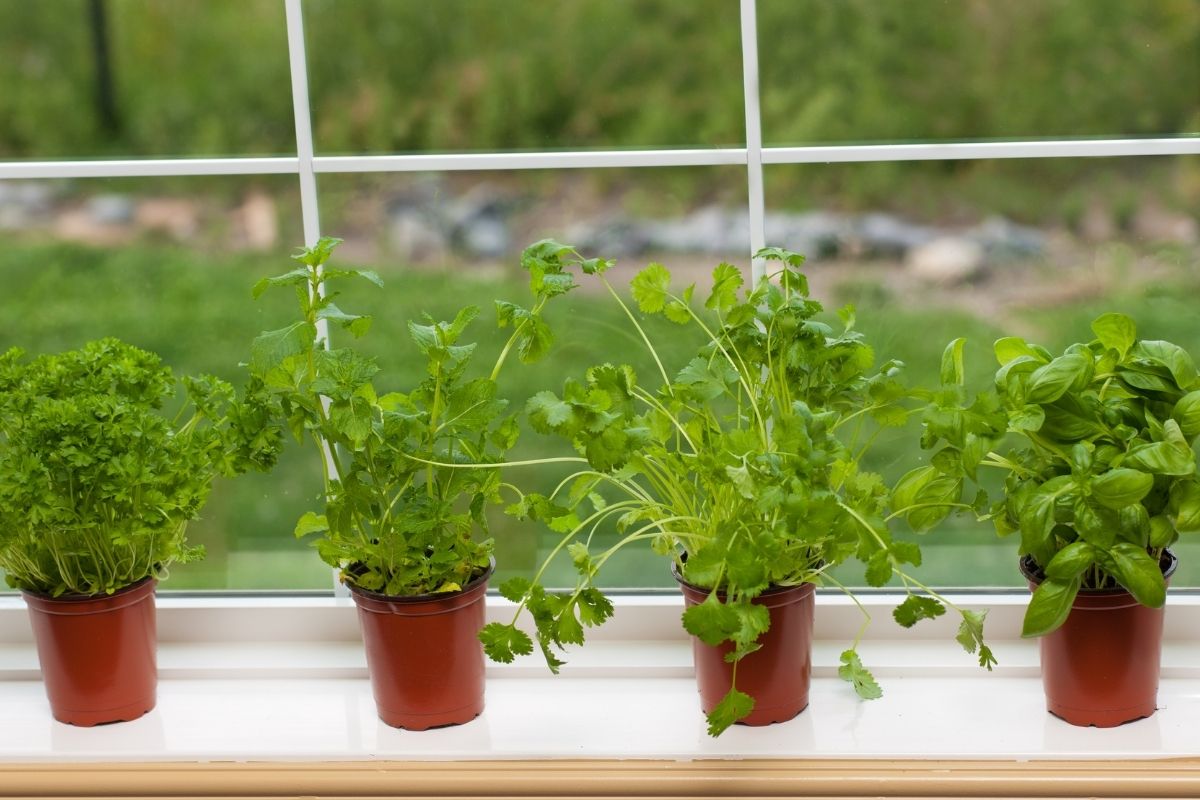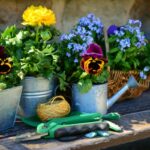If you’re new to gardening, you might believe that all soil is the same, but this isn’t the case. Soil has different properties depending on if it comes from a potting mix bag or your yard. These different soil types can make specific plants thrive.
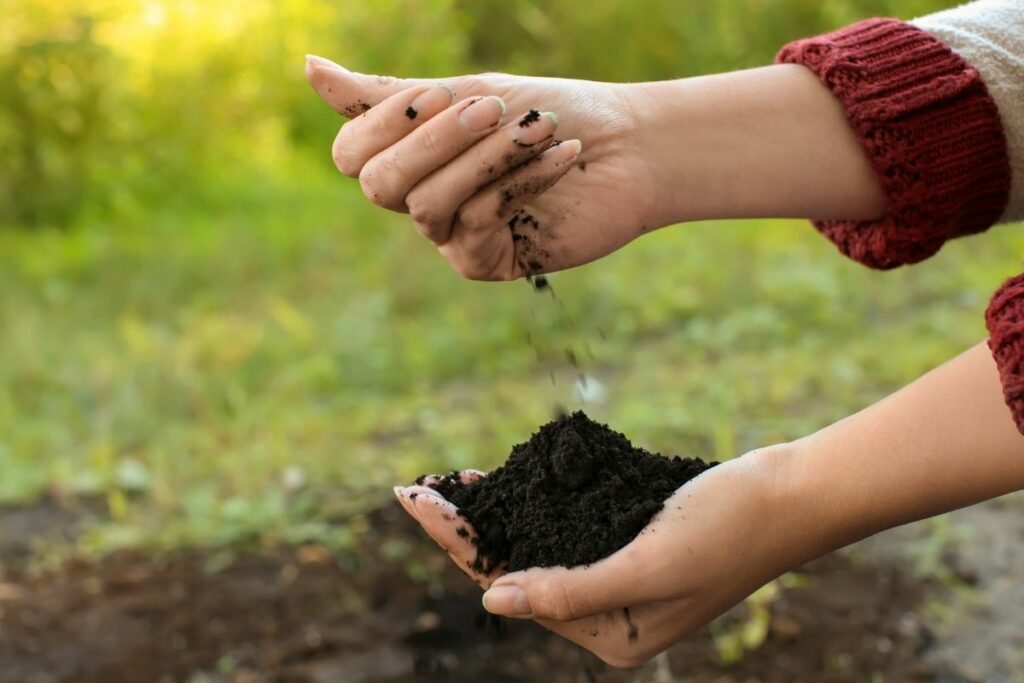
This may make you wonder, can you use outdoor soil for indoor plants?
The short answer is no.
Outdoor plants and indoor ones need to grow in different types of soil. Outdoor soil won’t make indoor plants thrive for a multitude of reasons, which we’ll cover in this article.
You’ll also find tips on how to tell if you’re purchasing potting soil or outdoor soil.
Why You Shouldn’t Use Outdoor Soil For Indoor Plants
Also known as topsoil, gardening soil is the uppermost layer of soil that harbors plants outside. It can range from 5 to 10 inches deep, though this varies whether the plant is found in a garden or natural surroundings.
Topsoil is very active as it’s packed with significant bacteria and organic substances sourced from compost. It also contains water, air, and minerals that are needed for plants to thrive.
Topsoil may be full of important substances, but it should never be used for indoor houseplants for the following reasons.
It’s Too Heavy
Topsoil and potting soil may look similar, but topsoil is much heavier. If you use topsoil to grow indoor plants, the soil will become compacted. When this occurs, the soil becomes hard and difficult to move.
Any air pockets that were in the soil will disappear. Plants need water and oxygen to survive. Without the air pockets in the soil, the plant won’t receive as much oxygen.
As the soil becomes hard, it will prevent water from traveling to the roots to nourish the plant. This can even occur if you use the bottom watering method.
When this happens, the roots will either take in too much water that can’t be drained, or the water will evaporate in the soil before the plant roots can absorb it.
If the plant has too much water, root rot may occur, which is when the roots start dying off. Soon, other parts of the plant will die off too.
If the water evaporates before the roots can absorb it, your plant will show signs of too little water, like yellowing, wilting, or a crunchy feel.
It Keeps Water For Too Long
Topsoil retains water easily. This is ideal for thirsty plants, but indoor plants don’t need to be watered as much. If they take in too much water, your plant could come down with root rot.
Root rot happens when plants are left in standing water, or when the plant is watered too much. Healthy roots are firm and white, but when they come down with root rot, they become soft and black.
They’ll also smell off, indicating that the roots have died. As this continues, the plant’s leaves will turn yellow, but in more serious cases, they could turn black and start falling off. The plant will stop growing as the roots can’t survive.
Outdoor soil has more moisture than indoor soil, so it should never be used for indoor plants due to the possibility of root rot.
It’s Less Aerated
Indoor potting soil contains several ingredients, including perlite, vermiculite, and peat moss. Peat moss holds a lot of moisture and nutrients.
Perlite stops the soil from compacting so that it keeps enough air pockets. Perlite encourages the soil to retain water and nutrients, but it also helps to keep the soil airy.
Topsoil is more compacted and doesn’t contain any of these substances, making it a less aerated soil. These both spell disaster for houseplants.
If you use topsoil for your indoor plants, the plant will have too much pressure on top of it as it attempts to grow.
Plants need oxygen to go through aerobic respiration, a process that turns plant sugars from photosynthesis into energy. If your plant lacks energy, it can’t grow as efficiently. If it is badly depleted of oxygen, it may not be able to survive at all.
It Might Not Contain Important Nutrients
Topsoil is full of nutrients, but this doesn’t mean they are the right ones for your indoor plant. Indoor plants need different nutrients depending on their type.
Outdoor soil may be nutrient-dense, but if it doesn’t contain the ones your houseplant needs, your plant may become nutrient deficient.
A nutrient deficient plant will stop growing and will cease creating new foliage and buds. Other symptoms include leaf wilting, browning, and edge and tip burning.
Similarly, an overdose of nutrients is also bad for the plant, as this can cause fertilizer burn. When this occurs, the indoor plant’s leaves may turn brown and start wilting. It will start to look burnt, as though it’s been left in the sun.
How To Tell If You’re Purchasing Topsoil Or Potting Soil
We’ve covered why you should never use topsoil for indoor plants. But how can you tell if you’re buying the right kind of soil?
Check The Label
Always check the label. In most cases, the type of soil should be displayed on the front. If it isn’t, look the product up online and read its description.
It should state whether it’s suitable for outdoor or indoor use. You can find some indoor soils that are suitable for outdoor plants but don’t go for any brands that state the opposite.
Look At The Ingredients
Look out for typical potting soil ingredients, like perlite, mosses, or vermiculite. If it doesn’t contain any of these substances near the top of the list, it’s probably topsoil, not potting soil.
Check The Cost
Topsoil is normally cheaper than potting soil as it doesn’t contain specific ingredients. Nevertheless, if you buy a larger topsoil bag, it may be just as expensive as a smaller potting soil bag. Price may be an indicator sometimes, but don’t rely on this factor completely.
Conclusion
No, you should never use outdoor soil on indoor plants. It may be confusing as the two look very similar, but topsoil is heavier, less aerated, and may lack specific nutrients that indoor plants need.
If you’re struggling to tell which one you’re buying, check the label and the ingredients.
Topsoil is normally cheaper than indoor soil, but never solely rely on this factor, as different brands may have differing prices.
- Best Hanging Plant For Low Light - September 4, 2023
- Best Indoor Plants Florida - August 28, 2023
- Best Plants For Bathroom Smells - August 21, 2023

